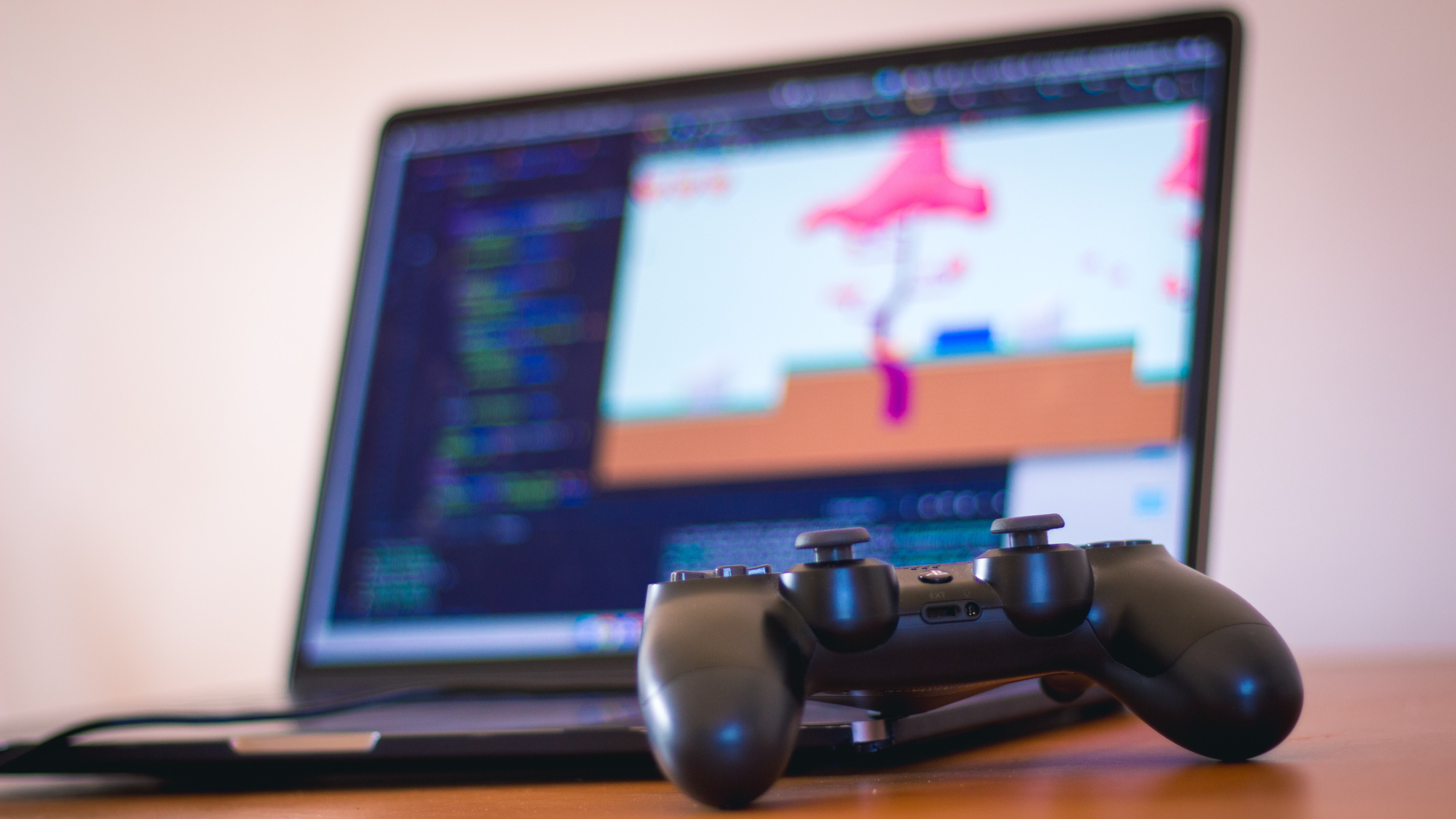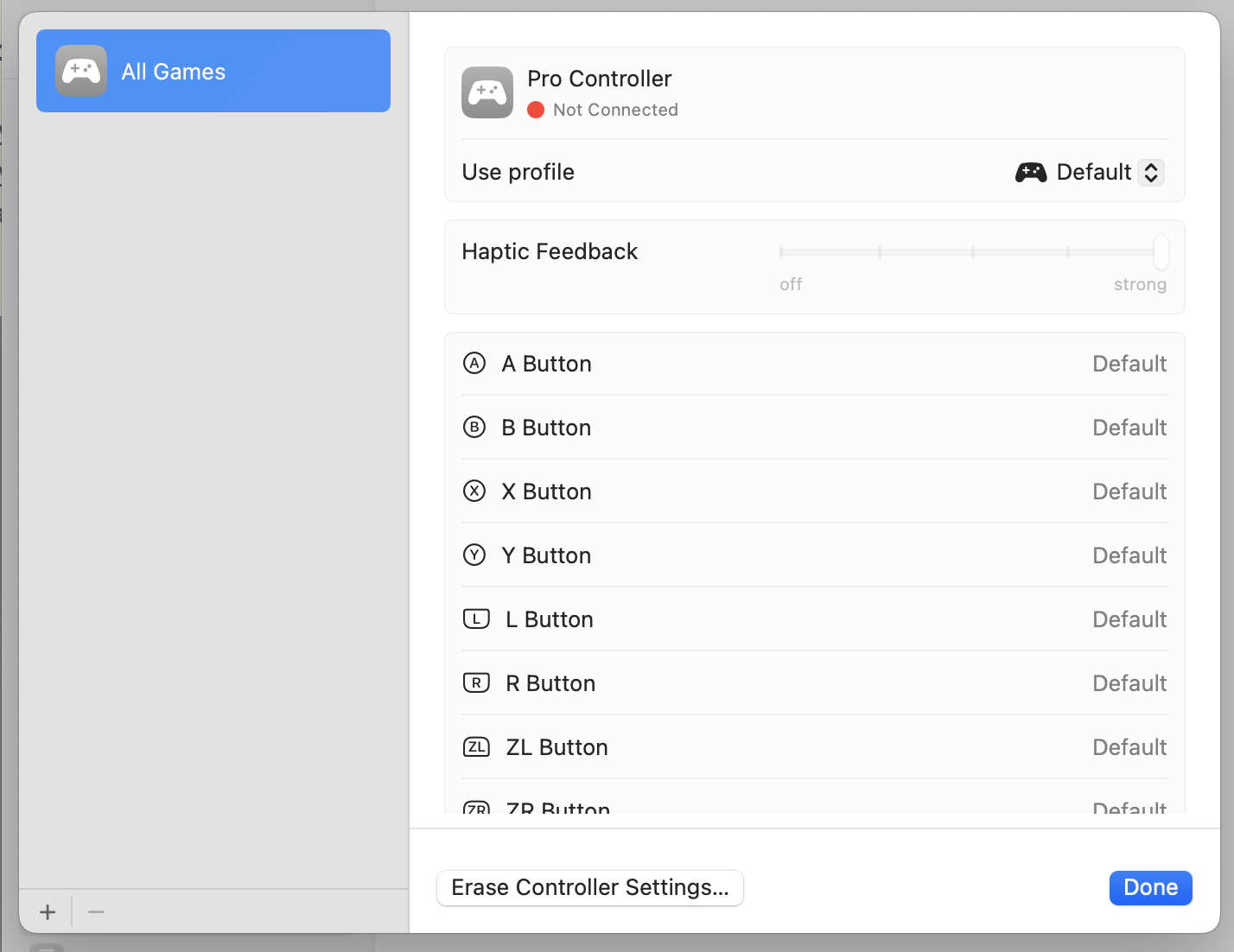

We may earn revenue from the products available on this page and participate in affiliate programs. Learn more ›
I love playing games on my Mac, but can’t stand sitting at my keyboard after a long day of writing internet articles. I’d rather plug my laptop into my TV and play from my couch.
And the good news is that the latest macOS, 13.0 Ventura, makes this a lot easier. For the first time, there’s a dedicated gamepad section in the System Settings, complete with the ability to remap buttons and even create profiles for different games. You can connect the controllers that pair with every current gaming console (XBox Series X/S, PlayStation 5, and Nintendo Switch), and most other Bluetooth and USB controllers should also work. This setup lets you game without the keyboard, whether you’re playing retro titles with the ultimate emulation app, you’ve downloaded a few favorites from Steam, or you’ve bought games from the App Store.
How to connect controller to your Mac
If you’re connecting a wireless controller, head to the Bluetooth page in System Settings.
You will need to pair your controller, a process that will work a little differently depending on which controller you have. It’s particularly confusing if you’re using a console controller, so here’s how to connect the ones you’re most likely to have:
- Nintendo Switch Pro controller: There’s a tiny, unlabeled connect button on the top of the controller, to the left of the USB-C charging port. Press and hold this button until you see it in the “Nearby Devices” list on your Mac.
- Nintendo Switch Joy-Con: You’ll find the minuscule sync button on the side of each controller, between the SR and SL buttons and below the indicator lights. Press and hold this until you see the Joy-Con on the “Nearby Devices” list on your Mac. You’ll need to connect both controllers—they will be used as a single controller system-wide, and can’t be used separately.
- PlayStation 4 and 5 DualShock controllers: Press and hold the PS and Share button at the same time, then look for your controller in the “Nearby Devices” list on your Mac.
- XBox Series X/S controllers: Press and hold the connect button, which has three radio waves next to it, then look for your controller in the “Nearby Devices” list on your Mac.
Note that to use the controller with your console again, you will need to re-pair it with the console. If you choose to go back to gaming on your Mac after that, you’ll have to re-pair it with your computer. It’s tedious, so keep this in mind.
[Related: Video gaming is for everybody now. Here’s how to get back into it.]
Other Bluetooth controllers should work, although some older console controllers may be problematic. For example, I couldn’t get a Wiimote to work, but I could plug in a PlayStation 2 controller using a USB adapter without difficulty.
After connecting, you should be good to go. Any game that supports gamepads should work with the device you connected, or at the very least offer the controller as an option in its settings. I tried this with a few indie games and was delighted.
And the nice thing is that the “home” button, which most gamepads offer, will open up the Games folder on your Mac’s Launchpad. From there, you can pick a game without touching your mouse or keyboard. It’s a nice touch.
You can customize your controllers on MacOS

If you want to customize your gamepad by, say, changing which buttons do what, you can. Head to the Game Controllers section in System Settings, where you’ll see every game controller you’ve connected and whether or not they’re currently hooked up.
Click Identify, and that specific controller will vibrate. Click the controller to reconfigure which buttons do what. You could, for example, switch the “A” and “B” buttons, if you prefer playing games that way.
You can make these changes system-wide, if you like, or you can create individual profiles for any games you play regularly that you want to create specific configurations for. This makes it possible for you to customize your layout for a specific game—useful when a game doesn’t organize the buttons in a way that makes sense to you.
All this means you have a lot of power to configure your controllers to work just the way you want them to, which should make for much more relaxed Mac gaming sessions. Maybe I’ll finally manage to finish the last level of Celeste.
